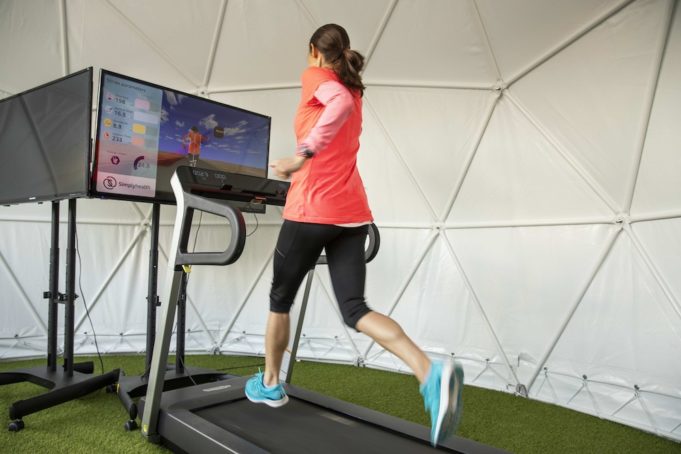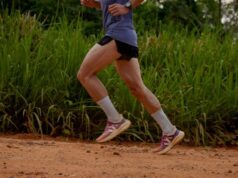What is a gait analysis?
It ranges from very basic to very complex analysis of your running form. The options vary from just analysing someone visually, so having them go for a walk or a run, to getting on a treadmill and taking video. The most complex form would be having a 3D analysis using dots that measure your movement patterns. The 3D analysis measures the angle of your joints and the force that goes through your feet on impact. All you’re looking for, in terms of running, is the symmetries on one side of the body compared to the other and what joint might be taking on more stresses than others. Factoring all of that in is how you work towards the most efficient running style.
What are the benefits?
Injury prevention is key. In a gait analysis you’re looking for potential risk factors for injury. That means trying to identify those risk factors before people get injured, so you can try to change them. But then also looking at potentially improving the running form. You might not necessarily get injured, but you may identify movement patterns that will improve running form. It’s good for any new runners to get a gait analysis done immediately because if there are any major imbalances then you can correct those straight away. You should have one every time you get a new pair of running trainers.
What are the different pronation types?
First there is a neutral foot stride, which is where you land and your foot will stay in the neutral position. So, it will neither deviate more towards the inside of the foot, nor the outside of the foot. In the neutral position you’re using the whole of your foot throughout the running action. Pronation is where you deviate more towards the inside (or the medial) side of the foot. Meanwhile, supination is where you deviate more towards the outside (or lateral) side of your foot. What we’ve found is that even in a neutral foot action, there is some degree of pronation, so pronation is actually required for a neutral foot action. If one foot pronates strongly it’s because either the degree of pronation is quite excessive, or it pronates quickly during that foot strike.
What should I be looking out for?
Most people getting a gait analysis done are just looking at the pattern in their foot. But what you should be doing is looking at the head position, shoulder position, front rotation, hip position, knee position and then finally foot position. So, you should go from top to bottom, as well as looking from the side as well. The foot may actually be the last thing you look at. If you look at the foot only, you might put someone in a totally different shoe than what they need. Whereas if you look further up the chain and spot that they need to correct something else, then it’s not the shoe that needs changing. That’s the best method of carrying out an analysis rather than just looking at what’s happening with the foot alone.
I wouldn’t recommend a gait analysis where someone asks you to stand on a pad. You need the motion. You can have someone in the standing position who pronates with their knee, but as soon as they get on a treadmill, they’re very neutral. If you give that person a shoe based on what they look like in the standing position, they’d probably actually get injured because they would be forced into a movement pattern that’s not normal for them. Choosing someone with experience when you’re having a gait analysis done is very important too. You want someone who understands the sport that you’re doing and the movement patterns of your body. There are even a number of health cash plans, such as the Simplyhealth Active Plan, that provide cover for gait analysis. The Simplyhealth running gait experience, Rate My Gait, is making its debut at this year’s Simplyhealth Great Run Series events.
How often should you change your running shoes?
The rough guidance is between 400 and 600 miles, but you should also look out for signs of wear and tear. If you’re a neutral runner, you will probably get more wear out of your shoes than someone who pronates or supinates because you will be using the whole of the shoe as opposed to one part more over others. If you have a strong heel strike you typically use the back part of your shoe more excessively compared to the front part. If you’re carrying more body weight, then you might have to change your shoes more often.
How many miles does it take to break in a new pair of running shoes?
How the shoe feels out of the box should be how it feels when you run. People need to break in shoes less than they used to. Of course, if you’re going to do a marathon, you don’t want to be buying a new pair of shoes the day before, but that said shoes don’t take a huge amount to break in. After your first two or three runs, they’re usually good to go after that. You certainly wouldn’t want to do a race in a brand-new pair of shoes!
Simplyhealth is supporting runners and their families every step of the way with the launch of the Simplyhealth Active Plan. For more information visit www.simplyhealth.co.uk/health-plans/active








